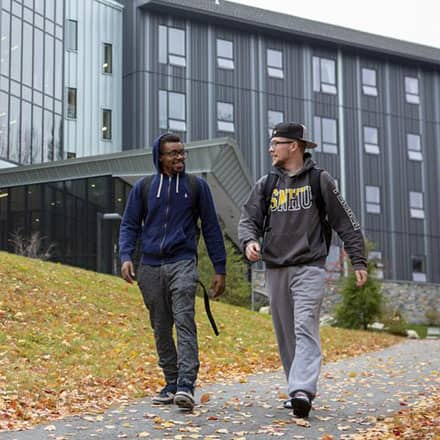CHEPP: Policy Solutions for Improving Accessibility in Higher Ed
This weekend marks the 35th anniversary of the Americans with Disabilities Act (ADA); the landmark civil rights law protecting people with disabilities against discrimination. Today in the U.S., more than one in five undergraduates report having a disability, yet many face persistent barriers on their journey to a degree.
 A new fact sheet from the Center for Higher Education Policy and Practice (CHEPP) at SNHU aims to improve accessibility in higher education by outlining the systemic barriers learners with disabilities face—from admission through graduation and into the workforce—and by offering federal policy recommendations.
A new fact sheet from the Center for Higher Education Policy and Practice (CHEPP) at SNHU aims to improve accessibility in higher education by outlining the systemic barriers learners with disabilities face—from admission through graduation and into the workforce—and by offering federal policy recommendations.
Key barriers include:
- Inaccessible digital platforms.
- Inconsistent application of accommodations.
- Denial of financial aid when academic pacing changes.
- Limited coordination between colleges and employment programs.
CHEPP’s recommendations for policymakers include:
- Creating a federal office dedicated to postsecondary access.
- Requiring institutions to accept standard documentation for disabilities.
- Aligning financial aid with flexible learning paces.
CHEPP identified structural changes that would help close gaps for students with disabilities such as universal design for learning (UDL), centralized and transparent accessibility services, and sustained engagement with faculty and student services professionals.
In a Diverse Issues in Higher Education op-ed titled Calling for Collaboration, Improved Higher Ed Systems for All, SNHU President Lisa Marsh Ryerson noted the widespread benefits of more accessible, inclusive higher education systems.
“Access to education is a social determinate of health; it has the power to unlock a lifetime of economic security and well-being,” Ryerson wrote. “As a public good, higher education bears the responsibility to serve all learners, including learners with disabilities. To do this, institutions must invest in the design and delivery of systems that meet their needs. Learner-centered design is a solution, but it can’t be an afterthought. It’s our starting point.”
For more insights on access and inclusion for learners with disabilities in higher education, read the CHEPP fact sheet, Policy Solutions: Increasing Accessibility in Higher Education for Learners with Disabilities.
CHEPP and the National Center for Learning Disabilities also recently announced the newly created Coalition on Accessibility in Higher Education, bringing together education, workforce, technology, and disability rights organizations to advocate for improved state and federal policies.
About Southern New Hampshire University

SNHU is a nonprofit, accredited university with a mission to make high-quality education more accessible and affordable for everyone.
Founded in 1932, and online since 1995, we’ve helped countless students reach their goals with flexible, career-focused programs. Our 300-acre campus in Manchester, NH is home to over 3,000 students, and we serve over 135,000 students online. Visit our about SNHU page to learn more about our mission, accreditations, leadership team, national recognitions and awards.

